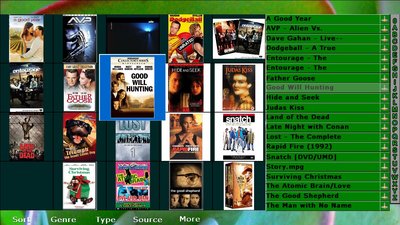Yes I had the same thing.
Itunes did this once to my collection as well. As wonderfull as all the automagic stuff may be for some users, it's irritating for people who want to manage their collection by themselves.
My musical taste is such that 90% of the CD's I listen too are not even available on Amazon.com.
Fortunately I copied my 120Gb of music to the core and could simply do that again.
Meanwhile I am using Amarok full screen launched from KDE for music. It's nicer and has last.fm support.
Itunes did this once to my collection as well. As wonderfull as all the automagic stuff may be for some users, it's irritating for people who want to manage their collection by themselves.
My musical taste is such that 90% of the CD's I listen too are not even available on Amazon.com.
Fortunately I copied my 120Gb of music to the core and could simply do that again.
Meanwhile I am using Amarok full screen launched from KDE for music. It's nicer and has last.fm support.

